When your blood sugar levels are higher than normal, carbohydrates such as cereals, pasta, certain fruits, desserts and bread are usually responsible. When one is diabetic, a meal plan is very important because it guides you on what kind of foods to eat. It should be good enough to fit in with your eating habits and also your schedule. A good meal plan should include consideration and optimization of the following:
Foods with low glycemic index values are better choices for stabilizing blood sugar than foods with high glycemic index values. The glycemic index basically depends on the physiological ability of dietary carbohydrates to lower or increase the level of blood sugar in reference to the type of food consumed by the diabetic patient. Relatively high glycemic index foods have ratings above 50, and often between 75-100. Check out the Glycemic Index Food Chart to find out the glycemic index values of foods that you can include in your Diabetes Diet Plan.
The purpose of a good meal plan is to help keep your weight on track, improve your cholesterol level, blood sugars and also blood pressure. According to past research[1] & health educators from the American Diabetes Association (ADA), a healthy diet along with a healthy lifestyle of exercising to maintain a healthy weight can help to reduce diabetes type 2. You can check healthy, mouth-watering recipes for diabetes that can help you lower your blood sugar levels, without compromising on taste and variety!

These are rich in fibres & help you feel full for longer periods. Beans, including black beans, do contain carbohydrates, but they also contain a significant amount of dietary fibre, protein, and other nutrients that result in a relatively low glycemic index rating[2]. Consequently, they secure a prominent position in the Diabetes Food Chart.

This is an all-season vegetable that is a very good source of dietary fibres, vitamins, folate, chlorophyll, manganese, calcium, potassium, zinc, phosphorus, protein and carotene. Spinach’s glycemic index is very low and which is why it is very helpful for diabetic patients for stabilizing blood glucose levels[3].

These are a part of the cruciferous vegetable family and include kale, rutabaga, brussel, broccoli, sprouts, cabbage, turnips, etc. They provide a lot of nutrients at low calories & are known to lower the blood glucose level in patients with type 1 diabetes and stabilize the lipids, insulin and blood glucose level type 2 diabetics.
I suggest kale if you’re looking to keep your blood sugar under control. It contains a mere 0.8 g of sugar. Packed with essential nutrients and fibre, kale may offer a powerhouse of benefits for your overall health.
Dr. Rajeev Singh, BAMS

Leaf-mustard is very low in calories (27 calories per 100g raw leaves) and fats[4]. However, its dark-green leaves carry ample amounts of phytonutrients, vitamins, and minerals. Additionally, it contains a very good amount of dietary fibre that helps control cholesterol levels by interfering with its absorption in the gut.

Best amongst the potato family, boiled sweet potatoes have a glycemic index of 44 which is why they are considered a superfood for diabetics. According to the American Journal[5] of Clinical Nutrition, eating sweet potatoes in moderate amounts as compared to other potatoes, is likely to give lesser troubles with sugar control.

Berries contain a natural sugar called fructose which does not need to be metabolized; hence, the fruit is well tolerated in the body. It’s advisable to take two servings but always monitor what works best for you.

Fresh tomatoes, when consumed in moderation, are not a problem for managing your blood sugar levels. For example, 1 cup of cherry tomatoes contains 5.8 g of carbohydrates and 1.8 g of fibre, which is the equivalent of 4 g of net carbs, while 1 medium whole tomato has 4.8 g of carbohydrates and 1.5 g of fibre, or the equivalent of 3.3 g of net carbs. Its estimated glycemic index is 2 to 4.

Studies[6] have confirmed that eating whole grains and high-fibre foods helps in reducing the risk of diabetes by almost 35 to 42%. Oatmeal consists of high fibre and whole grains. In addition, it consists of soluble fibre that slows down the rate of glucose absorption in the GIT(gastrointestinal tract) thus ensuring the blood-sugar levels are kept at the right levels.
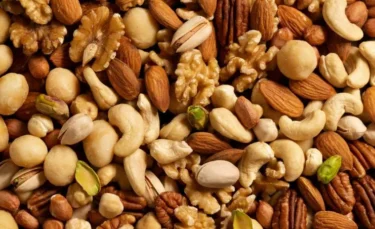
According to research[7] from St. Michael’s Hospital and the University of Toronto, eating nuts every day could help control diabetes type 2. It is important to note that nuts have a much lower glycemic index which ranges from 14 to 21. They contain relatively minimal amounts of carbohydrates in comparison to the favourite snacks consumed by most people such as crackers.

Depending on the kind of mushroom you go for, the glycemic index might fluctuate although it is always considered as low. With their unique line of nutritional benefits, it also has the benefit of adding a whole new flavour to a meal. Portabella mushrooms are used as a meat replacement because of their beefy texture and nutritional value. It contains 22 calories per 100g.

Cruciferous vegetables such as cauliflower are very beneficial in terms of glycemic load. These vegetables are often seen in the health news since they are known for their heart disease and anti-cancer characteristics. If taken regularly, this unique blend of phytonutrients is very healthy and absorbed well in the body. One can rotate this kind of vegetables so as to avoid eating the same kind every day[8].

This fruit ranks pretty low when it comes to the glycemic index. Though not as low as some vegetables, it’s considered healthy for diabetic people. It’s definitely a fruit to consider when making a listing of a low glycemic index food diet.

Coconut ranks highly in saturated fats, but if used sparingly, it is not a big threat to your blood glucose levels. Coconuts are used to flavour different types of dishes. Its different parts can be used, be it, coconut milk, coconut flour, its flesh and also coconut water. However, it’s important to know which part you are using to determine the glycemic index as well as nutritional benefits.
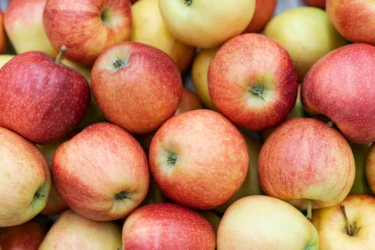
They say, an apple a day keeps the doctor away. This is because apples provide you with fibre, vitamins and minerals and a wide range of nutritional benefits while having a low glycemic index of 39. It requires very little preparation and no special storage, and it is also easy to carry[9].
Let me share a delicious and healthy fruit recommendation with you: passion fruit! If you’re looking to control your blood sugar levels, passion fruit might be a great addition to your diet. Just 100 g of this tropical fruit contains approximately 11.2 g of sugar. Given that the type of sugar is 100% natural, it is advisable as a natural source to keep your blood sugar levels normal. Do consume in a small to moderate amount.
Dr. Siddharth Gupta, B.A.M.S, M.D (Ayu)

Peaches are a great food to stock in the season. You can enjoy the natural sweetness in them, and when eaten in moderation, they can keep the levels of blood sugars in check. Though the GI changes when peaches are used as a part of a dessert, eating fresh peaches shouldn’t raise concerns. Its GI ranking is 28.

Whole wheat bread has gained popularity in recent years. This is because white bread is regarded as unhealthy. However, wheat bread is ranked 49 in terms of GI. This is because it’s processed differently from white bread and hence, has more nutritional benefits[10].

Beta carotene in carrots is known to help with eyesight and is also high in vitamin A. When mixed with peas, they can make a very delicious meal and still keep low glycemic content. Carrots have a glycemic index of 19[11].

Broccoli is a superfood often seen in almost every healthy food listing. They are known for providing fibre, minerals, vitamins and nutritional value. They have a very low value of 10 on GI scales and therefore, the body can handle it very well[12].

These contain 81 calories in every 100g serving. They also have high amounts of fibre and a fair amount of potassium. Also, it is a source of vitamin c and protein. Its glycemic index is 39.

Milk is known for providing calcium and vitamin D as well as high protein. Having a glass of milk when you are diabetic is totally acceptable since it falls under the low GI foods with a glycemic index of 31[13].

Yoghurt is known because of its active and live cultures which help in the digestive issues by providing good bacteria. Whether you are eating unsweetened yoghurt or one with artificial sugars, it will still fall under low GI foods. However, low-fat yoghurt is recommended. Its glycemic index is 33. Also, it is advisable to consume natural flavoured yoghurt that is free of any type of artificial sweeteners[14].
Another excellent option for managing blood sugar levels is tofu. If you’re looking for a protein-rich and low-sugar food, tofu might be a great choice. Only 0.62 g of sugar is included in 100 g of tofu.
Dr. Anuja Bodhare, B.A.M.S, M.D (Ayu)

Lentils are very rich in fibre, minerals and vitamins. They are slowly gaining popularity and are often overlooked when it comes to a blood sugar conscious diet. Their Glycemic index rank is 30[15].

Grapes are very sweet and many mistakenly believe they should be avoided when it comes to diabetics dieting. There are various types of grapes one can enjoy eating, be it red or white. Whichever kind you love the glycemic index is considered low & lies between 43 to 53 depending on the kind.

These are often compared to apples but they contain different nutrients as well as taste. They are a great choice when one is considering a low glycemic index food. Their glycemic index rank is 41.
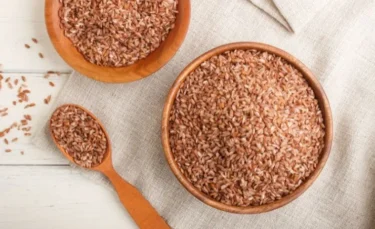
Brown rice is one of the common foods that most diabetic people consume. This is because, compared to white rice, a serving is considered to have a glycemic rank of 87 whereas that of brown rice is 55.

Peanuts can either be enjoyed as a snack, with butter or even sauce. They are considered legumes and are very good at keeping someone alert. They are also very good at stabilizing blood sugars. Their glycemic index rank is 6[16].

Hummus is made up of chickpeas but ranks lower than them. This is due to other ingredients in them such as lemons, tahini, and olive oil. Their GI is virtually zero but you still need to watch portions so as to avoid gastrointestinal discomfort. The glycemic index is 6[17].

These are healthy nuts and can be taken as desired. They act to help the health of polyunsaturated and monounsaturated fats. It’s also a great source of magnesium and iron. Cashew nut butter is also healthy if one opts for an organic variety. They have a very low GI of 2[18].

Green beans are one of the most popular foods often consumed as a side dish. They are relatively low when subjected to the GI scale and are also an excellent source of fibre, vitamin c, and minerals. They help strengthen the immune system and also provide antioxidants that help battle free radicals so as to help avoid inflammation. Their Glycemic index rank is 15.

Oranges are known for their vitamin C content and it’s a great fruit to eat to boost your immune system when you notice early symptoms of a cold. They can be used as a smoothie, morning fruit or an all-time top-up. Its glycemic rank is 40.

These are considered to be low glycemic foods. Though they may vary in scale, they have a considerable amount of nutrition. The glycemic index for plums is 24 and 29 for prunes.

Fish are good for diabetic patients since it’s an excellent source of low proteins. They are known to be rich in omega 3, a kind of fat that strengthens the heart and potentially helps with management of diabetes. Including seafood in your diet and having at least two or more servings a week will help a great deal in blood sugar levels reduction[19].

Although many sprinkle this in our drinks every morning, you might be surprised to realize the health benefits of this wonderful spice. Other than lowering the bad cholesterol, and raising the good cholesterol, cinnamon has been proven to lower blood sugars modestly.

Many people tend to fear garlic due to bad breath. But garlic extract is known to increase the levels of insulin available for diabetics. It has thereby been proven to reduce the levels of blood sugars[20].

These are foods such as avocados, nuts, and salmon, tuna, trout and olive oil. They all contain monounsaturated fats that help lower insulin resistance.
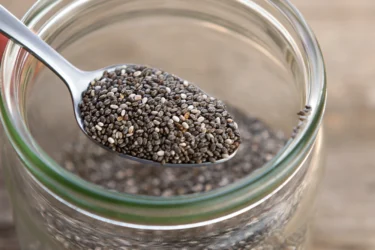
Chia seeds are minute dark, seeds with nutty flavours. They are rich in healthy fats, vitamins, fibre, and antioxidants. One of the studies[21] published in ‘Diabetes Care’ found out that Chia seeds play a role in improving blood sugar. Also, it reduces the chances of heart diseases occurring in type-2-diabetic patients.

Capsicum is known to be cultivated for thousands of years and used for food, medicine and also for decorative purposes. The effectiveness of chilli peppers as medicine is that they can activate the transient receptor vanillin. This receptor is associated with neuropathic and inflammatory pain, anxiety and how our bodies process fats. It’s also an important insulin regulator. This study has led to the production of extracts aiming at pharmacological strategies to treat medical conditions such as diabetes[22].

Vinegar has been used for centuries for a variety of health problems, including glucose management, dandruff, excessive sweating, fungal infections, and even heartburn. In a study[23] published in Diabetes Care, two tablespoons of ACV at bedtime helped to regulate fasting blood glucose levels in patients with type II diabetes.

Protein foods are an important part of a diet plan. They include; fish, chicken, meats, soy products, and cheese. The difference between these foods is how much fat they contain and protein.

Although dried figs are available throughout the year, there is nothing more refreshing than the unique texture and taste of fresh figs. The leaves of fig have been known to contain anti-diabetic properties and can reduce the level of insulin needed by persons with diabetes.

Dates, along with other healthy but relatively unsafe foods for diabetes like peanuts and honey, often get a bad rap. These foods are, however, good for reducing bad cholesterol or LDL. For diabetics, in particular, portion control of these foods becomes very important.
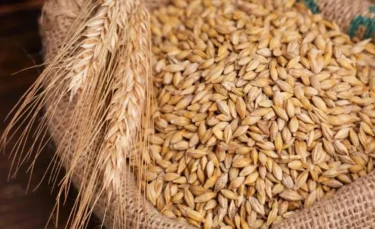
A cup of cooked whole-grain barley consists of 14 grams of fibre. The fibre is 3g soluble and 11g insoluble. 1 cup of cooked pearl barley consists of 6g fibre which is 2g soluble and 4g insoluble. Diabetic patients experience alterations in blood glucose levels after consuming carbohydrate-rich foods. Barley consists of a GI of 25.

Unlike white bread or potatoes, pasta is pretty low in terms of its glycemic impact. Many diabetics fear pasta because of its infamously high carbohydrate nutrients. However, with proper proportions, pasta can be safely indulged in a diabetic diet. Limiting portion size and choosing high-fibre whole grain pasta is the key to keeping the blood sugars low.
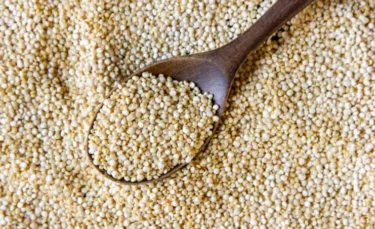
Quinoa is an excellent item to control your blood sugar. Whole grain with a low glycemic index to support even blood sugar, is packed with protein, fibre, vitamins, minerals, and phytochemicals. Quinoa is easy to cook and flavorful, and you can incorporate it into a healthy diabetic diet in a variety of ways[24].

Apricots are sweet and have a delicate flavour. They have a wide range of nutrients and this makes them worthwhile to be added to a diabetic diet. Apricots can help you satisfy your sweet tooth without worrying about your blood sugars due to their low glycemic index. Dried apricots are also a great alternative when eaten in small amounts.
Let me share with you another fantastic option for maintaining healthy blood sugar levels: arugula! If you’re looking for a nutritious leafy green that won’t spike your blood sugar, arugula is a great choice. In just 100 g of raw arugula, you’ll find only 2 g of sugar.
Dr. Smita Barode, B.A.M.S, M.S.
Apart from the above list of foods to eat to lower blood sugar, there are other dietary and lifestyle changes you can use. Here are a few tips on diabetes control to get you started:
Weight management will be a major factor in your fight against diabetes, so be sure to follow your doctor’s instructions carefully.
Apart from lowering the blood sugar within a short duration the foods also offer the body other benefits that include boosting body immunity, repairing worn-out cells and checking on most of the lifestyle diseases. However, this is not an exhaustive list of food items that can be eaten to control blood sugars. This list is meant to guide you on some of the locally available foods that have a low GI and which can be considered when regulating the blood sugar in the body. For those who are suffering from very high blood sugar levels, it is advisable that they seek the advice of a dietitian, clinical nutritionist and their family doctors so as to come up with the best treatment plan besides healthy eating.
Disclaimer: The information provided here is for educational/awareness purposes only and is not intended to be a substitute for medical treatment by a healthcare professional and should not be relied upon to diagnose or treat any medical condition. The reader should consult a registered medical practitioner to determine the appropriateness of the information and before consuming any medication. PharmEasy does not provide any guarantee or warranty (express or implied) regarding the accuracy, adequacy, completeness, legality, reliability or usefulness of the information; and disclaims any liability arising thereof.